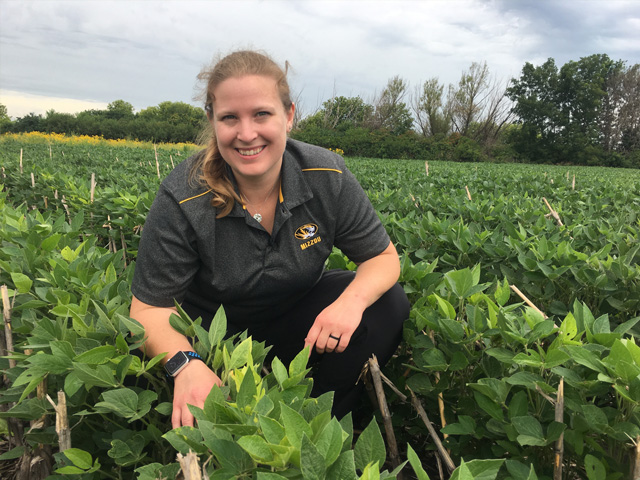Time to Check Your Todes
Majority of Midwest Soybean Fields Infested With SCN
DECATUR, Ill. (DTN) -- Chances are you get a blood pressure reading with each doctor visit. If that number is higher than it should be, steps are taken to keep the problem in check.
The same is true of soybean cyst nematode (SCN). A simple test can tell you if nematodes are present and if management measures are working. Yet each year farmers ignore SCN warning signs -- even though testing is free or subsidized in many states.
"Successful management of SCN starts by knowing your numbers," according to University of Missouri Plant Pathologist Kaitlyn Bissonnette. "In Missouri, I recommend growers get an SCN egg count every three years." Harvest is a preferred time to test for the pest.
The SCN Coalition has a new video series titled "Let's Talk Todes" that explains why soil testing is the foundation for managing SCN https://www.thescncoalition.com/….
Testing is particularly important this year as dry conditions can cause SCN populations to reproduce quickly and increase populations densities. https://www.dtnpf.com/…
Iowa State University Nematologist Greg Tylka feels more than a little frustration at the complacency regarding SCN testing. "It's the most damaging soybean pathogen year in and year out," said Tylka. "But, interestingly, it's not at the top of the farmer's list of concerns.
P[L1] D[0x0] M[300x250] OOP[F] ADUNIT[] T[]
"I think they've become complacent because it is so commonly found," Tylka added. Surveys in the Midwest have shown SCN to be present in 50% to 80% of fields, he said. Soybean-checkoff-funded surveys in Iowa have found 70% of the fields infested with SCN. Similar studies in Illinois have found 80% of fields with SCN levels.
Tylka prefers to see farmers test soil for SCN before populations explode. Once SCN is detected, it will always be present in the field to some level, but management is possible with crop rotation, resistant varieties and seed treatments.
Research also shows SCN can live in the soil for 10 years or more in the absence of soybeans. "If fields have never been checked for SCN or have not been sampled before or after the last three soybean crops, the results of soil samples collected this fall after soybeans may be real eye-openers," he said.
It is useful to know what the SCN population densities are in fields this fall even if soybeans will not be grown in these fields in 2021. Numbers may be so high that planning for multiple years of a nonhost crop might be warranted in the rotation.
"The initial baseline SCN soil test determines what management strategies should be selected. Then, it's important that they document the source of SCN-resistant soybean variety they are using, what crop is being rotated and the seed treatment if that's used," Tylka said.
Bissonnette encourages farmers to work closely with seed salesmen and agronomists in their regions to determine the best SCN management strategies.
In states such as Illinois, Iowa and Missouri, SCN is well established and more likely to be resistant to the most common form of varietal resistance, PI 88788. Soil sampling helps farmers know if management tools are working or if they need to make modifications, she said.
In areas where the pest has more recently become established, such as North Dakota, soil testing helps track where SCN has spread. "But those farmers need to learn from the lesson of the established areas and rotate sources of resistance to protect PI 88788's integrity," Bissonnette added.
SCN has now been detected in every soybean producing state except West Virginia and into Canada. State-specific advice is available by visiting https://www.thescncoalition.com/….
Find a list of testing labs: https://www.thescncoalition.com/….
Pamela Smith can be reached at Pamela.smith@dtn.com
Follow her on Twitter @PamSmithDTN
(c) Copyright 2020 DTN, LLC. All rights reserved.






